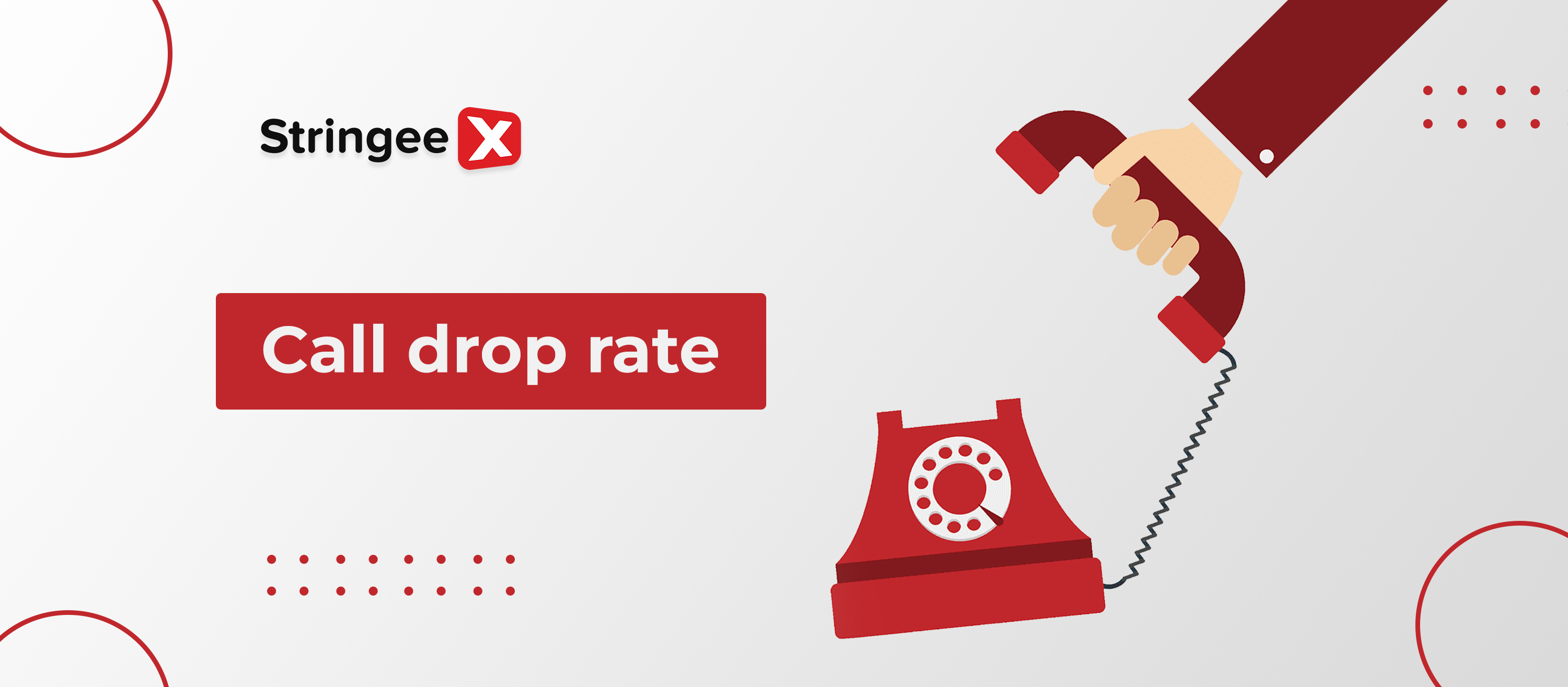Introduction
In the highly competitive Indian customer service market, ensuring seamless connectivity is paramount for user satisfaction. However, the persistent issue of call drop rate has been a significant challenge for service providers.
From exploring the underlying causes to examining their profound impact on user experience, we uncover strategies and solutions to enhance customer service in the Indian telecom sector.
Definition And Measurement Of Call Drop Rates
The call drop rate measures how often phone calls are unexpectedly disconnected before they are completed. Imagine you're talking to someone on the phone, and suddenly, the call just ends without you wanting it to. That's a call drop.
Source: Customerthink
Telecom companies track the number of calls dropped compared to the total number of calls attempted to measure the rate. They use this information to calculate a percentage that tells them how often calls drop. For example, if ten out of 100 calls get dropped, the call drop rate would be 10%.
This measurement helps companies understand the reliability of their network and identify areas where improvements are needed to ensure better quality and fewer interruptions for users.
Factors Contributing To Call Drops
Network Congestion
Network congestion occurs when there is too much traffic on a network than it can handle at that time. This can happen when many people in an area are trying to make calls or use internet data simultaneously. With the limited network resources getting overloaded, the quality of service suffers, leading to problems like call drops.
Think of it like traffic jams on the road. When too many vehicles try to use the same road at once, everything slows down and starts getting congested. Similarly, suppose too many users are accessing the mobile network simultaneously in an area. In that case, it jams the network, causing call drops and poor voice/data experience for everyone.
Infrastructure Limitations
Infrastructure refers to the physical equipment and systems that comprise the telecommunications network, such as towers, cables, and switches. When these components are outdated, damaged, or insufficiently maintained, they can lead to call drops.
For example, in cities like Mumbai or Delhi, where millions of people live and work nearby, the high demand for network services can strain the infrastructure and result in call drops for users.
In remote rural areas, the lack of robust cabling and backhaul infrastructure makes it challenging to maintain consistent network quality, resulting in higher call drop rates for users in those regions.
Geographic Factors
India's vast and diverse geography presents unique challenges for mobile networks. The country has mountain ranges, dense forests, deserts and many terrains, making it difficult to set up robust telecom infrastructure seamlessly across all regions.
Source: 360Analytika
For instance, the signal faces more obstructions in hilly and mountainous areas like the Himalayas and has to travel longer distances. This can lead to higher call drop rates compared to plains.
Similarly, due to the terrain, providing consistent network access in remote desert areas of Rajasthan or dense northern-east forests is an uphill task.
Regulatory Compliance Issues
Telecom operators have to follow various rules and regulations set by government authorities regarding network quality, spectrum usage, and service standards. If they fail to meet these regulatory requirements, they can face penalties like heavy fines or even suspending operations in certain areas.
Issues may arise when there are long delays in getting regulatory approvals for plans to upgrade infrastructure or acquire additional spectrum. During this period, the operators cannot enhance their network capabilities to handle increasing user load.
Impact of Call Drops On Contact Centers
User Experience and Satisfaction
Call drops can be highly frustrating for clients reaching out to contact centres, whether for sales inquiries, support or grievance redressal. They may have to repeat their entire issue multiple times if reconnected, leading to a waste of time and effort.
Due to the abrupt disconnections, important details can be missed or miscommunicated. This poor experience leaves customers dissatisfied and angry, even before their concerns are resolved.
From the contact centre's perspective, frequent call drops increase operational inefficiencies. Agents have to restart discussions from scratch, lowering their productivity.
There is also a higher risk of customers abandoning calls entirely after repeated drops, leading to potential loss of sales or unresolved support issues. This results in lower customer satisfaction metrics and a tarnished reputation for the company's customer service quality.
Decreased Agent Productivity
When the incident happens, the agent has to start the entire conversation from the beginning if the client contacts back. This leads to much time wasted on repetition rather than making progress on resolving the client's query.
Source: DiveAI
Ultimately, due to the delays caused by restarting conversations and the disruption to their workflow, an agent can handle fewer customers during their shift when there are frequent call drops. This decreases their productivity in terms of the number of cases they can successfully resolve in that period.
Negative Impact On Agent Morale
Imagine being an agent trying your best to patiently understand an audience's issue and provide a resolution, only for the call to drop due to network issues beyond your control abruptly.
It can be incredibly demoralizing and frustrating, especially when it happens repeatedly during your shift. Agents may feel their hard work and efforts are being wasted through no fault of their own.
Agents may start dreading certain times of day or areas they have to service if they know the likelihood of call drops is higher during those periods.
This unhappiness and lack of morale can eventually reflect in their work performance, making them seem disinterested or curt with customers, further compounding perception issues.
Customer Service Best Practices
Proactive Communication And Transparency
When there is a high likelihood of inconvenience due to network issues or maintenance activities, contact centres can proactively inform customers about the situation.
They can send messages through various channels like SMS, emails, app notifications or announcements on their website and social media channels. This prepares customers for potential incidents and lets them know it is a temporary circumstance.
Being upfront and transparent about the ongoing challenges also helps build customer trust. Rather than being frustrated by unexpectedly dropped calls, they appreciate the advance notice and understand the reasons behind it.
Effective Complaint Handling And Resolution
When users experience inconvenience, they often feel frustrated. When they contact the contact centre to complain about the inconvenience, the representative listens attentively to their concerns, apologizes for the inconvenience, and assures them that their complaint will be addressed promptly.
Source: CXtoday
Effective complaint handling and resolution involve compensating affected customers for the inconveniences. For instance, the contact centre may offer credits or discounts on future services as a gesture of goodwill to acknowledge the customer's frustration and inconvenience.
Moreover, contact centres can leverage customer feedback obtained through complaint resolution processes to identify patterns and trends related to the incident. By analyzing client complaints and feedback, contact centres can gain valuable insights into areas for improvement and take proactive measures to address underlying issues contributing to call drops.
Compensation and incentives
To make up for the poor experience, contact centres can proactively offer compensation or incentives to the affected clients. The compensation could be in account credits, free talk time, discount vouchers or complementary service upgrades.
By providing tangible value and making an effort to make amends, contact centres demonstrate that they understand the inconvenience caused and are committed to keeping customers satisfied despite the technical issues.
This gesture of compensation helps reduce the annoyance felt by customers over the dropped calls and makes them think that their continued business is valued.
Leveraging Technology For Customer Support
Leveraging technology can indeed be beneficial for contact centres, mitigating the impact of the incident and enhancing the overall user experience.
Companies can implement Interactive Voice Response (IVR) systems, chatbots, and self-service portals to provide alternative channels for customers to seek assistance. These automated systems can handle routine inquiries and tasks, reducing the reliance on traditional phone calls and minimizing the risk of call drops.
Platforms like StringeeX offer advanced IVR menus and AI-powered chatbots to handle initial queries and data collection through self-service before intelligently routing customers to live agents when needed. Customers can avoid long call waiting periods that increase the likelihood of dropped calls.
StringeeX's cloud architecture also ensures uninterrupted uptime and reliable connectivity compared to on-premises systems prone to outages.
By adopting StringeeX's suite of modern contact centre technologies, businesses can minimize their reliance on voice alone and provide frictionless support experiences that are resilient to call drop issues.
Customers appreciate the convenience, while contact centres benefit from higher productivity, improved metrics like first-call resolution rates, and better capacity to handle call surges without compromising the quality of service.
Conclusion
From understanding the factors contributing to the call drop rate to implementing effective mitigation strategies, contact centres play a crucial role in ensuring a seamless and satisfactory customer experience.
By prioritizing reliable network connectivity, proactive problem-solving, and customer-centric approaches, Indian contact centres can navigate the challenges and maintain a positive reputation in the market.










